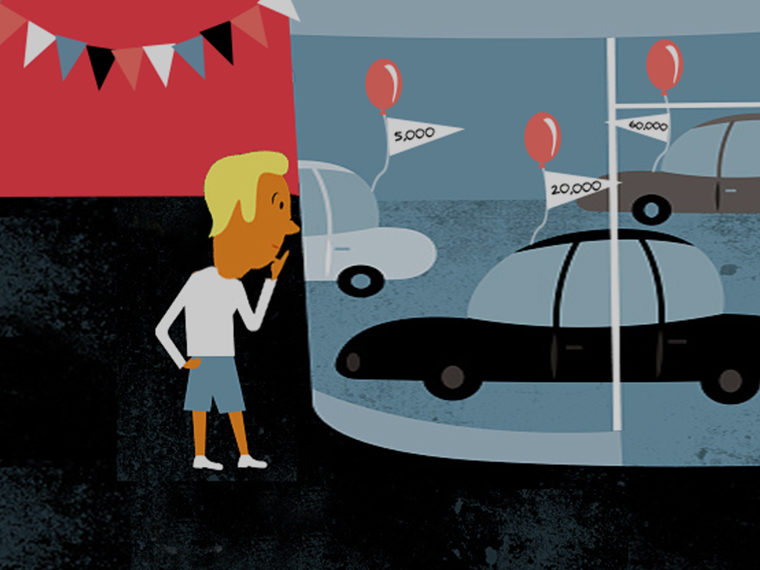Capturing how decisions are driven by a habitual preference for moderation
The middle road has long been cast as the righteous path among foundational philosophers and eastern religions. Aristotle placed moderation as the means to a virtuous life. Plato asserted, “A person of moderation is a person of character and wisdom.” Buddhism, Taoism and Confucianism extoll the moral utility of a middle way over extremism.
Moderation is also a message coursing through our day-to-day decision making. What and how much we should eat and drink. How we invest for retirement: Diversification and asset allocation are guardrails to avoid the risks of taking extreme (aggressive or conservative) positions. The decision to actually save for retirement is in itself an exercise in moderating spending today to benefit our future self. Budgeting is an exercise in moderating spending to our means.
Opt In to the Review Monthly Email Update.
Given the ubiquity of moderation as a potential tool in decision making, UCLA Anderson’s Aimee Drolet, Duke’s Mary Frances Luce and Benjamin Rossi, George Washington University’s Li Jiang and University of Chicago’s Reid Hastie set out to develop a way to measure an individual’s tendency to seek balance and make trade-offs when faced with choice. The researchers acknowledge there are consumer preference scales that touch on the concept of moderation, yet they propose in a paper published in the Journal of Consumer Research that the scale they developed advances that work by specifically drilling down on moderation as a behavioral trait in decision making.
Their Preference for Moderation Scale suggests anyone in the business of persuasion — marketers, policymakers, political consultants — may benefit from fine-tuning messaging to consumers with a high PFM score. Across seven experiments the researchers found high PFM participants were more apt to choose middle-road options compared with low PFM participants across a variety of scenarios.
Scaling Preference for Moderation
The researchers first had to build the scale itself. They started with a list of 102 proverbs and aphorisms focused on the concept of moderation. This initial list included pro-moderation sayings such as “Avoid excess. Let moderation be your guide” (Cicero) and “Too much of a good thing is a bad thing” (Shakespeare) — and moderation-as-suboptimal sayings such as “A thing moderately good is not as good as it ought to be” (Thomas Paine) and “The road of excess leads to the palace of wisdom” (William Blake).
After a series of tests the researchers eventually zeroed in on eight sayings that they determined were best suited to measuring an individual’s preference for moderation as “an overarching goal.”
They then had more than 350 undergrad students analyze each saying and rate on a scale of 1 (strongly disagree) to 7 (strongly agree) how much they agreed with those eight statements. The average scores are in the table below.
Two additional tests that included another 490 participants further supported that these eight sayings were valid ways to measure an individual’s propensity to rely on moderation as guiding habit.
Putting PFM to the Test
The team then turned to whether its PFM scale was any good at predicting consumer behavior. They ran a series of experiments that measured the likelihood of participants with high PFM scores (top quartile) to choose a middle-ground option in a variety of tasks, compared with the choices made by participants with a bottom-quartile PFM score.
The high PFM crowd was consistently more prone to be centrists, seeking a middle-of-the-road approach more often than others.
One experiment featured the highlight/balance construct established in prior consumer choice research. The crux of this concept studies how consumers pair related choices. For instance, if you choose the priciest appetizer on the menu, is your entree also pricey (highlighting), or do you opt to balance it by choosing a less expensive entree?
For the PFM research, participants were told to imagine they often go to baseball games where they sometimes sit in the pricey section ($65 per seat) with the great sightlines and sometimes they sit in the cheap seats ($22) with just an average view. They were then asked to choose the beer they would drink: a pricey $6 import or the $3 domestic brew.
Participants who were in the highest quartile for PFM were indeed more likely to balance out their spending by buying the cheap beer when they had splurged on the expensive seats, and opting for the expensive beer when they were sitting in the cheaper seats. More than 4 in 10 of the high PFM group opted for balancing, compared with 1 in 3 of the lowest PFM quartile.
Another experiment focused on personal finance decisions. Spending and saving decisions are not merely consequential. They are often behaviorally treacherous, as most of us struggle with delayed gratification, which is the heart of avoiding overspending and managing to save for one’s future self (retirement).
More than 225 participants took a financial health quiz. Here too, those with a high PFM score were more likely to practice moderation on some key financial goals.
- More than half of the highest-quartile PFM participants said they regularly saved for long-term financial goals, compared with 36% of the lowest-quartile PFM participants.
- Nearly three-quarters of the high PFM group said they compare at least three choices when considering a big-ticket purchase, compared with 58% of the bottom-quartile PFM crowd.
- Around 6 in 10 of the high PFM group said they avoid impulse purchases and never use shopping as a form of recreation. Less than 3 in 10 of the bottom-quartile PFM group said they avoided impulse buying and retail therapy.
Testing PFM in the Real World
The researchers also studied the actual online consumer reviews of 80 participants. They found that that high PFM individuals are more likely to post online product reviews that offer a balanced take (e.g., they were more likely to mention both pros and cons).
And the researchers used the 2018 midterm elections to explore another form of moderation: split ticket voting. In the day before and the day of the 2018 election, using Amazon Mechanical Turk, they recruited 290 adults, who resided in one of the 11 states, which explicitly lay out the choice to vote straight ticket or split ticket. Two-thirds of the highest-quartile PFM group said they voted split ticket, compared with 40% for the bottom-quartile PFM group.
“The PFM is a unique predictor of decision behavior. Having made the case for the usefulness of the principle, and provided an effective measurement tool, we look forward to further applications in other domains of everyday life, such as physical and mental health,” the researchers conclude.
Featured Faculty
-
Aimee Drolet
Professor of Marketing; Marion Anderson Chair in Management
About the Research
Drolet, A., and Luce, M.F., Jiang, L., Rossi, B. & Hastie, R. (2020). The Preference for Moderation Scale. http://dx.doi.org/10.2139/ssrn.3642793






